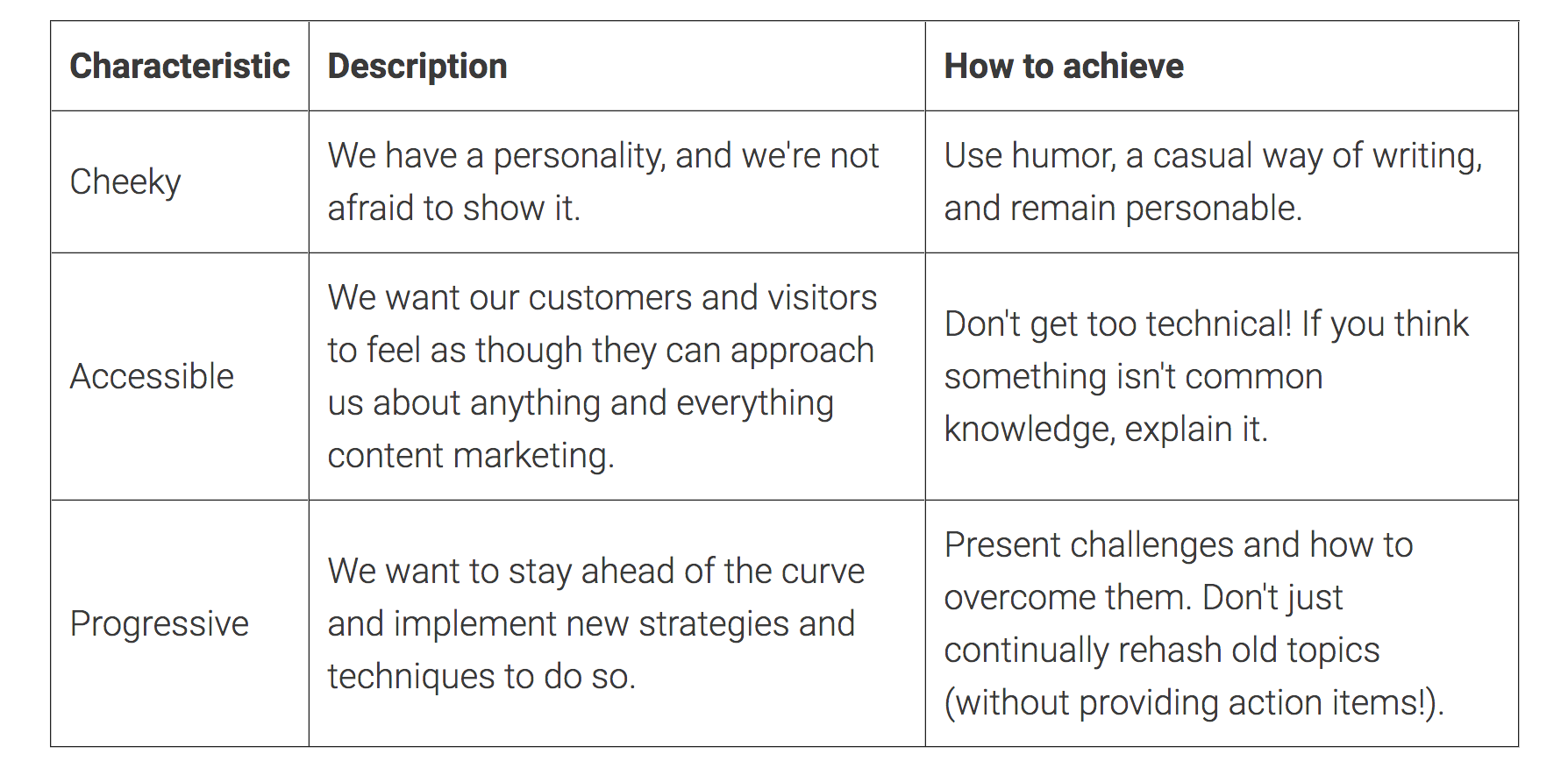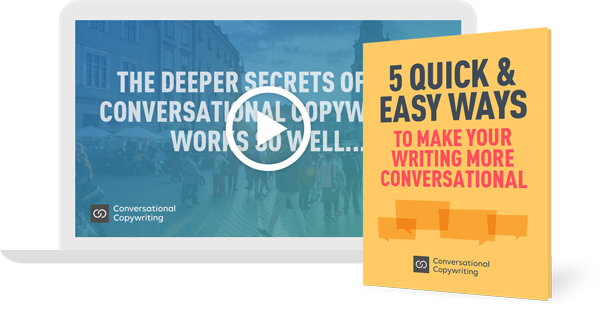
In this post I get to interview best-selling author and Chief Content Officer of MarketingProfs, Ann Handley.
I’ve known Ann for over 20 years, ever since she first invited me to write for ClickZ, a website she co-founded with Andy Bourland back in 1997.
Through working with her and reading her books, I know we agree on most things when it comes to writing for the web.
That’s all very nice, but could also be a problem. Mutual appreciation interviews can get really boring, really fast.
So… I thought a little harder and came up with a slightly non-obvious line of questioning.
I don’t know what Ann’s answers will be. But I’m really looking forward to finding out.
Let’s get started.
Nick: It really has been over 20 years now since I wrote my first article for ClickZ. That’s both amazing and scary at the same time!!
Ann: Hold on… I thought this interview was about me?
Nick: Of course! : )
So… I have a short list of questions for you… all relating to how companies can find and use a conversational voice across all digital media.
But first things first… to be sure we’re both on the same page.
Do you agree that marketing copy online should be less about promoting stuff AT your readers, and more about engaging WITH them… by using a voice that is less promotional and more conversational?
Ann: Yes. 100%.
The first step toward a conversation voice is to understand what “voice” actually means, and why it matters.
Voice is one of those concepts that may sound better suited to the literary world than the business world. In literature, it refers to how you come across in your writing. In marketing, it can be the secret sauce in your content recipe.
In other words: Your tone of voice isn’t about what you say but how you say it—and it’s about the impression your brand leaves on customers.
Companies spend a great deal of time on logos, color selection and other cues they think of as “branding”—the look and feel of their website, collateral and signage. But very few take the time to consider the benefits of employing a unique voice as part of that brand.
Consider this: If you were to mask the logo on your website, would you sound… well, like you? Or would you sound like everyone else (as in: your competitors)?
Nick: Love it. I often pose a similar challenge… What would happen if I stripped all the images from your site… would the words alone still paint the picture you’re trying to share?
Now for the tricky part. I know a lot of companies find it hard to find an authentic, conversational voice they can use in their marketing.
It’s pretty easy when your business is small. You can use the founder’s voice. And very occasionally, with a founder like Steve Jobs, that voice can still be central to the brand once your business has grown a lot larger.
But still… most companies find it hard. Do you have any ideas on how a marketing group might set about finding a conversational and likeable voice for their company or organization? Any “discovery tips”?
Ann: I’m a fan of starting with some discovery questions. Like:
“What’s unique about your business?”
“What’s special about your products?”
“What’s special about the way you do business?”
“What’s your company culture like? (Are you buttoned-up or playful?)”
“How do your employees relax together? Do you play beer pong in the parking lot or have morning yoga sessions?”
“How do you want to be regarded by customers and your community? Are you a trusted source for high-level insight or hands-on practical advice?)”
This should help you come up with a few keywords that best define who you are. But go beyond the generic.
Avoid trite, non-differentiating factors—like friendly, honest, reliable. Those ideals may be important to your business, but they won’t serve as a foundation for a distinctive voice. Instead, identify three descriptive terms that reflect specifically who you are and how you wish to be perceived.
And then take each of those words and make them real and practical. Develop some detail around them, because abstract attributes in isolation don’t mean much.
For example, if one of your brand values is “creative,” what exactly do you mean? When and how are you creative? How does your creativity help clients?
Or, if one of your brand values is “unusual,” what exactly does that mean? In what ways are you unusual, and how does that quirkiness benefit customers? Do you solve problems differently? Do you have an approach that exemplifies that ideal in the real world?
Nick: I agree. I just wish more companies followed your advice and pushed beyond the obvious, surface descriptions, like “creative”, and dug a little deeper.
Once you’ve found a voice for your business, how do you set about using it? Would you rewrite everything all at once? Website, emails, newsletters, landing page, social media… everything?
Or would you introduce your new, conversational voice in stages? If so, where would you start?
Ann: Email to me is the best place to start implementing a voice, for two reasons:
1. An inbox is an inherently personal place. And an email is like a letter: It’s a direct and personal way to communicate (or, it should be). So it allows you to write on a personal, human level to that one person you are trying to reach.
2. Email is a great place to exercise a new voice and get it all nice and limber before you start mucking around on a website.
Actually, I just thought of a third reason why email:
3. Email is an easy place for Marketing to affect—so often, you have to get other people involved (IT) when you want to change a website. Most marketers write and send emails all on their onesies.
Nick: Great points about email. I usually suggest using social media first, simply because it’s an inherently conversational platform. But I find myself being persuaded by your reasons to use email first. : )
Next thing… and perhaps another challenge.
In a small company, I can see one writer, or maybe a team of two or three, developing a conversational voice for the company and then applying it.
But what about larger companies and organizations – where writing teams are much larger and spread out geographically? How would you go about helping writers keep that voice consistent and true?
Style guides and the like work well enough for business writing. But I’m not sure they’d do so well when it comes to conversational writing.
Ann: I think style guides are a must for almost any company. They work best when you give real examples of a voice in context. The best style guides don’t just say what a tone of voice is… they also show how to convey it.
One of my favorites is Uberflip’s style guide.
Here’s what I mean:

Beautiful, right?
By the way, the idea of a “style guide” might feel both pedantic and impenetrable to a lot of businesses—especially growing, scrappy ones who think a style guide is about as appealing as a History of Trigonometric Functions (volumes 1-34).
So write the style guide in a… wait for it… conversational style! Make it feel accessible. Make people actually want to use it.
The worst thing is when a pristine style guide does nothing but sit on a shelf feeling all pompous and proud of itself, but serving no one.
Nick: Maybe we just need to come up with a new title. Whenever a client says “Style Guide” I feel this impulse to run for the nearest exit!
To wrap things up, I have a question that jumps sideways into a whole different topic. Kind of.
Do you think online writers should worry their jobs might be lost to AI-powered chatbots, content bots and copy bots?
Or, to put it another way, do you think the task of finding and deploying a conversational voice for a business might one day be taken care of by AI?
Ann: I feel zero percent hysterical about the idea of AI writing our precious copy better than we do.
I don’t think we should all be depositing poop emojis in our drawers at the notion that artificially intelligent robots are coming to take over all of our writing jobs.
Instead of freaking out, let’s freshen the guest room and give the robots a place to lay their thermoplastic heads and close their soulless eyes. Let’s welcome them with open arms.
Why: Because I believe the machines will help us by doing the things we don’t really want to do (and frankly, they can do better). Let the machines take over the optimizing, the analyzing, the reporting, the boring, the drudge, the data.
That means we can all get back to the reason we went into writing in the first place: To do great and creative things.
Nick: This has been great. Thank you so much for your time and your thoughts.
Here’s to the next 20 years!
Ann: Thanks, Nick! See you in 2038!
Ann Handley is a bestselling author who speaks worldwide about how businesses can escape marketing mediocrity to ignite tangible results. Her last book, Everybody Writes is a Wall Street Journal bestseller. IBM named her one of the 7 people shaping modern marketing. She is the Chief Content Officer of MarketingProfs; a LinkedIn Influencer; a keynote speaker, mom, dog person, and writer. Every two weeks, she publishes Total Annarchy, the Best Newsletter On This Planet about writing and marketing.
Conversational Copywriting is the future of selling online. You can build your expertise now, or try catching up later. Find out about the course here…

Great newsletter Nick! I really enjoyed and picked up a lot from the Ann Handley interview. Keep the good stuff coming.
Printed this post and hung it on my wall. Thanks, Nick and Ann. You two are so inspirational (hehe-meaning you make me want to get up in the morning and start the conversations that matter for my clients and their companies.) Onward.